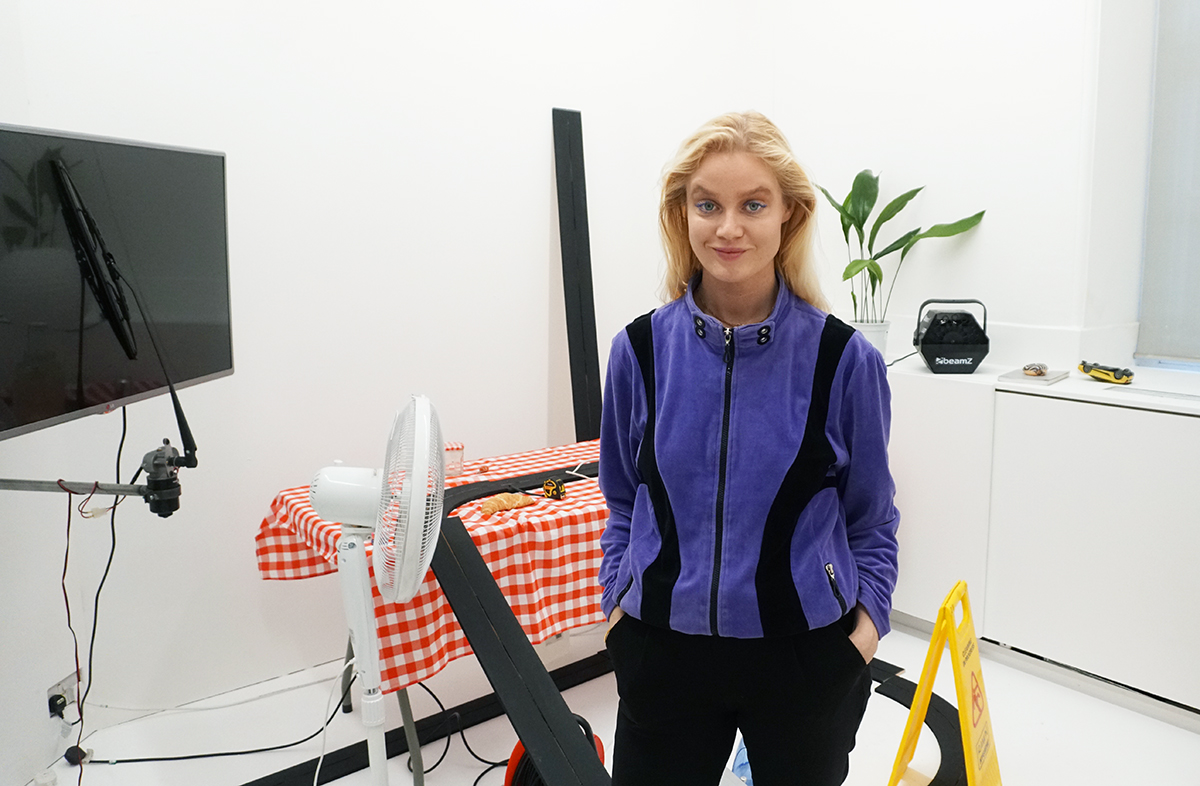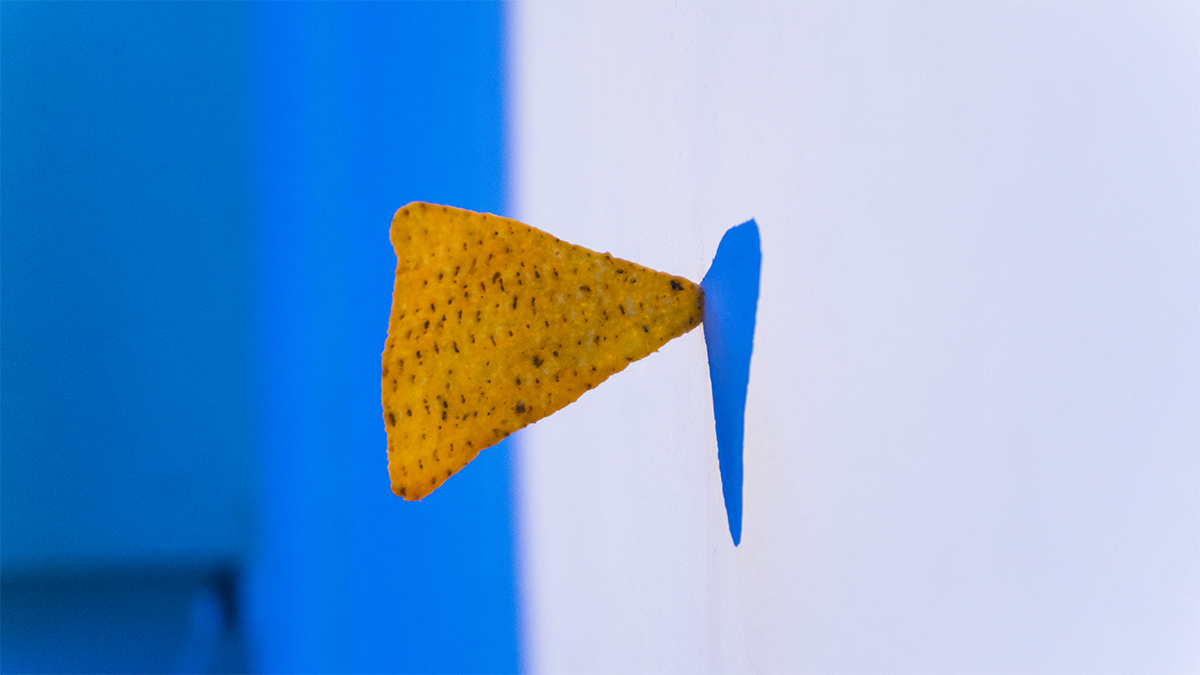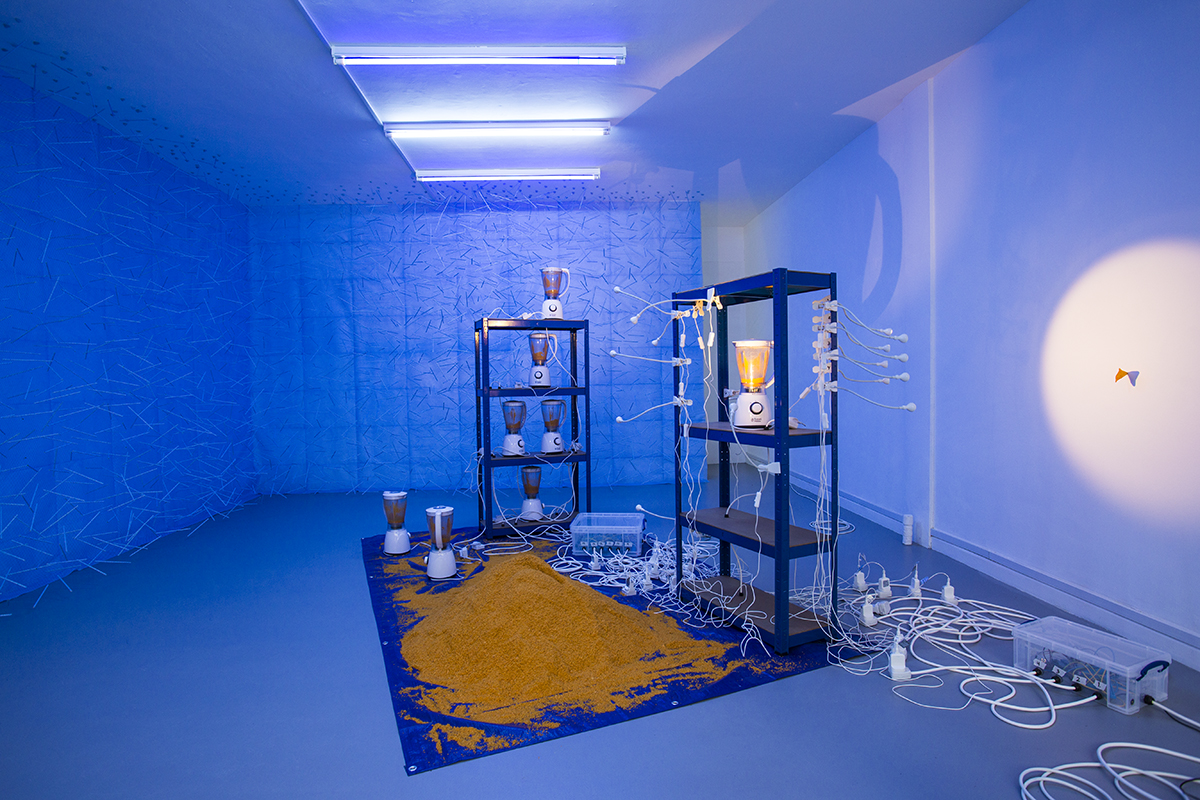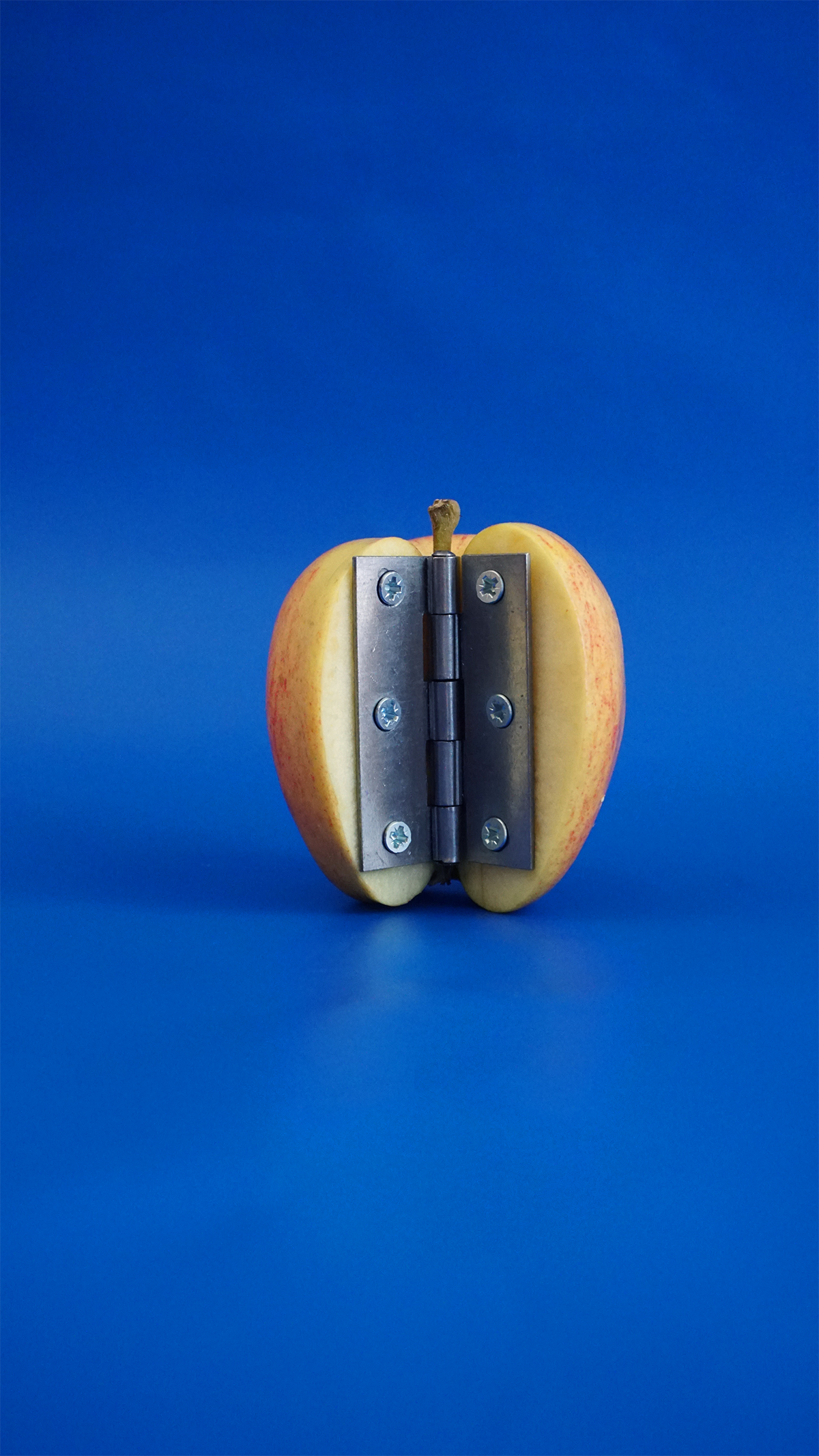
Artist Clara Hastrup in her studio at the Royal Academy of Arts in London
Danish artist Clara Hastrup graduated from the Royal Academy of Arts in 2020, and is one of the selected artists in this year’s New Contemporaries exhibition. Here, she speaks to Millie Walton about experimenting in the studio, the symbolism of blue and finding beauty in everyday objects
1. Where does your creative process typically begin?
I have to look backwards to see how things begin. I have a lot of things lying around in the studio that I find and buy – everyday objects -, and I like to continually experiment with these objects and make small models. Through this chaos, ideas come about. I also read and research things I am interested in, and play is an important part of my practice. I play around with functions of the objects, and see how they can lead from one thing to another. I usually have multiple things going on at the same time, and I try and connect these ideas.
Follow LUX on Instagram: luxthemagazine
2. What draws you to the objects that you collect or buy?
I look at colours and visual qualities. For example, with Lapdog Tabernum, I found the colour of Doritos interesting, and the fact that you can transform them into a material similar to sand that has a lot of new associations and meanings. At other times, I’m drawn to a pattern of some sort. So much design and thought that has gone into these low value, everyday objects, and I try to look for the beauty even if it seems like it has little meaning or value. It’s a combination of allowing intuition and logic to come together. Everything, to me, is a potential material.


Here and above: Lapdog Tabernam, 2019, Clara Hastrup, installation view at URBANEK Gallery, South Dulwich, London
3. The colour blue seems to recur in your work quite frequently. Does it have particular significance for you?
I have always been very drawn to blue. It is a colour that represents a lot of emotions. It kept popping up for me particularly in relation to the Lapdog Tabernum installation, and I allowed it to tie the materials together. It’s a very vibrant colour, but a sad colour as well, and I like that contrast with the humorous gestures. At the same time, it’s a colour which is often used as a backdrop as it is associated with the sky and ocean.
Read more: Anne-Pierre d’Albis-Ganem on championing artists
4. How did your Instant Sculpture series come about?
It started because I had these travel magazines which I took from my bedroom and brought into the studio. I started cutting them out and making these small gestures, but I didn’t know what to do with them as they only existed in the moment. I wasn’t sure if they were sculptures or images, but then I started photographing them, and repeating the process. Sometimes, these kinds of experiments don’t lead to anything, but perhaps they will become bigger sculptures. That’s often what happens with my work, I start by doing a lot of small things and occasionally, it makes sense to transform its meaning which excites me.

A work from Hastrup’s ongoing Instant Sculpture series
5. Where do you go for inspiration?
Museums like the Tate or galleries in Mayfair, but inspiration, for me, could come from anywhere – botanical gardens, nightclubs, music, reading.
6. What do you have planned for 2021?
I am part of the New Contemporaries exhibition which opens on 13 January at South London Gallery. Also my degree show, which was postponed from last year, is taking place in June this summer.
View Clara Hastrup’s portfolio of work: clarahastrup.com
For more information on URBANEK Gallery, visit: urbanekgallery.co.uk








